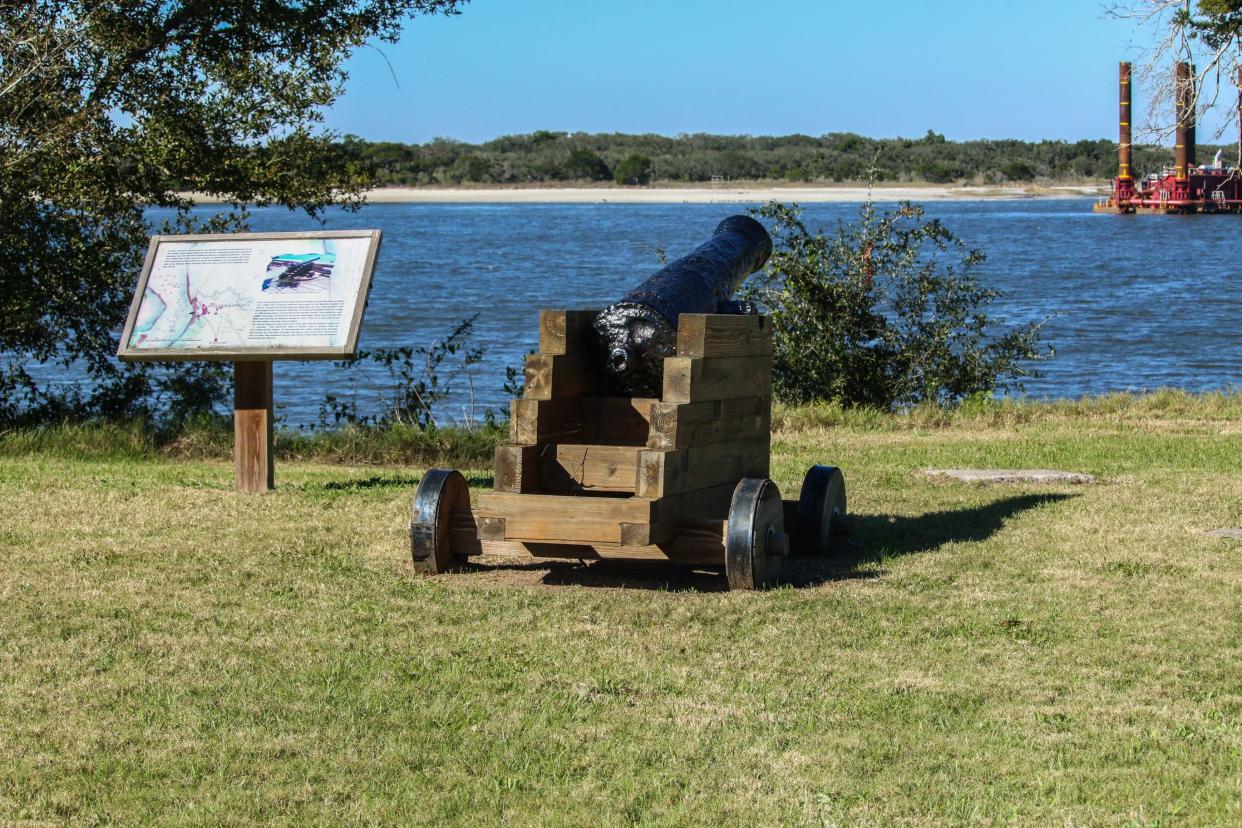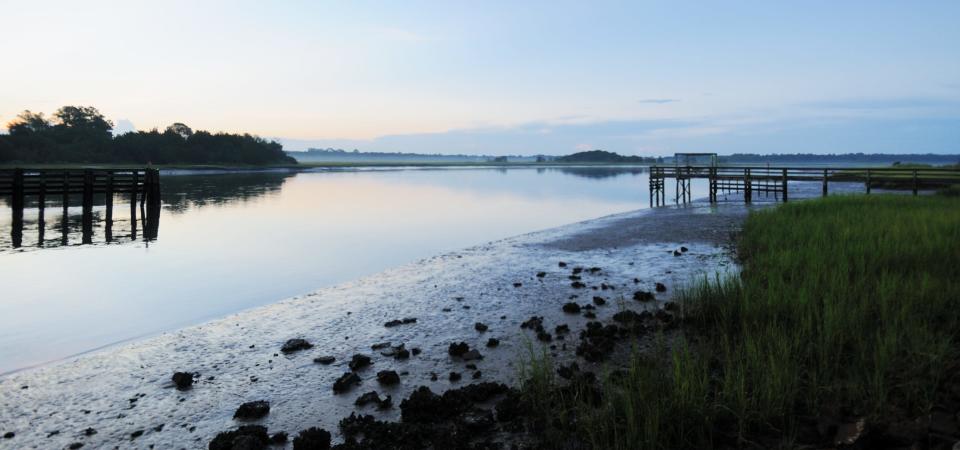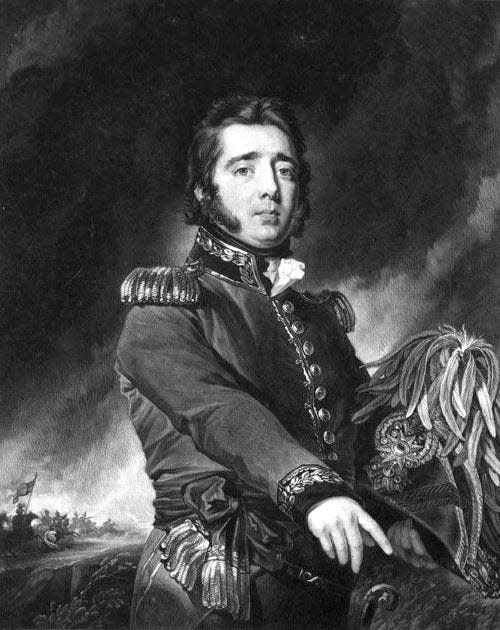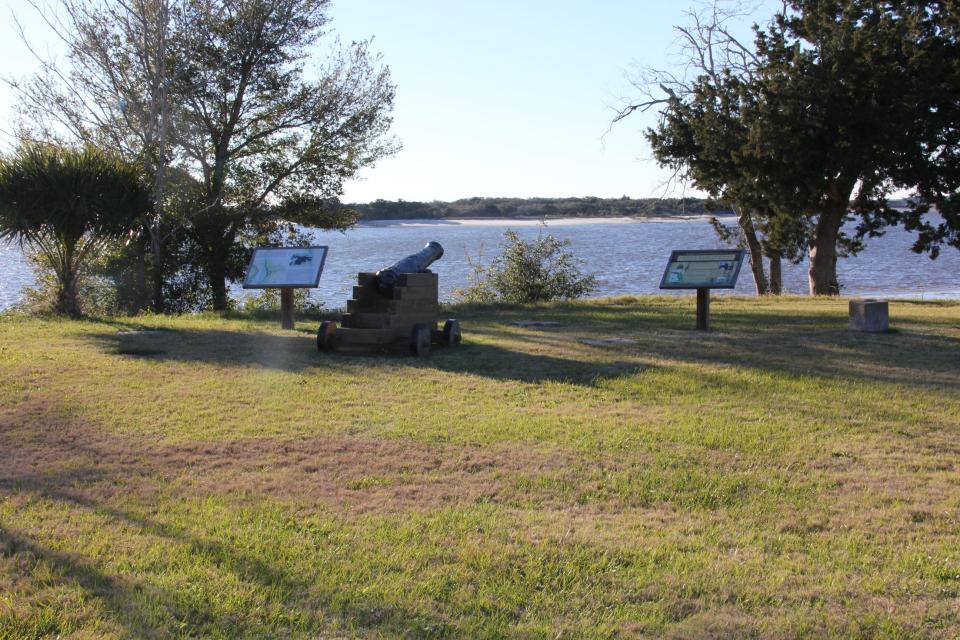Florida History: The swashbuckling era of Amelia Island

Amelia Island is the northernmost barrier island off the Atlantic coast of Florida. About the size of Manhattan Island, Amelia is often referred to as the “Isle of Eight Flags.” The French gave the island its first name in 1562 — “Île de Mai.” The Spanish, to whom it belonged, off and on, from 1513 to 1821, called it “Isla de Santa Maria.” The Brits, who had it from 1763 to 1783, called it “Egmont Island,” and the Americans called it “Amelia.”
Our story today is about the other four flags that were raised and lowered over Amelia Island in the swashbuckling era of its 18th -and early 19th -century history.
More: Florida History: Tracking the history of Fernandina Beach
First, the names
In 1735, the colonial governor of Georgia, James Oglethorpe, had actually talked some Spanish officials into giving Santa Maria Island to Georgia. He promptly named it after Princess Amelia Sophia Eleanor, the daughter of George II, who had appointed him the first governor of his newly chartered colony of Georgia in 1732.
Of course when Spanish King Phillip V found out about it, he took his island back.
Between 1735 and 1810, Amelia Island changed hands and names twice more and had come again under Spanish rule. The colonial government acquired, from an English settler named Mary Mattair, 200 acres of land on the bluff overlooking the Amelia River. Here they platted the town that, in 1811, the Spanish governor of East Florida named Fernandina, after King Ferdinand VII of Spain.
The Spanish incorporated a fort into their town plan. It had become apparent to the governors of Spanish Florida that assaults upon the island by Americans were not likely to stop.
More: Florida History: Lake City is home to first designated state park in Florida
Flag No. 1
Sure enough, before the town of Fernandina was even platted, American settlers in East Florida had, in rebellion against the Spanish governor of East Florida for perceived abuses, attacked and overcome a Spanish garrison on Amelia Island and hoisted a French flag.
A French flag? It’s complicated, but suffice it to say that the rebellion was instigated by French spies and their American collaborators to rid Florida of the Spanish. The flag was a symbol of the rebels’ solidarity with the ideals of the recent French revolution …liberty, equality, and brotherhood.

A few weeks later, the rebels fled at the sight of Spanish ships approaching the island. The French flag came down; the Spanish flag went back up.
Flag No. 2
And then, a few months after the town was platted, but before construction of a defensive fort could even begin, another American mob, calling themselves the “Patriots of Amelia Island,” overcame the Spanish garrison and hoisted their Patriot flag.
Another long story, which I will summarize as follows:
In the early 19th century, the little settlement of Fernandina was a hellhole of saloons and bordellos servicing the cutthroats who smuggled slaves, liquor, and luxury items into the United States against its prohibition of all the above.
Under the pretext of protecting U.S. trade interests, but for the larger purpose of annexing the Spanish colony of East Florida, President James Madison dispatched secret agents to East Florida to incite rebellion in that colony against Spain. Georgia frontiersmen and militiamen, always spoiling for a fight, anyway, were backed up by Florida planters who chafed under the rule of the Spanish. The planters were incensed by the Spanish refusal to clear out all the “Indians,” and furious at their recruitment of armed, and free, Black militiamen to defend the frontier settlements. They kept the farmers worked up over alleged injustices, and ultimately, nine American gunboats lined up in the Amelia River with their guns trained on Fernandina. Unprepared to counter such an attack (the fort still being in the planning stages), the commander of the Spanish troops surrendered Fernandina and Amelia Island to the “Patriots.”
Their flag did not fly above Fernandina for long, however. In 1813, the United States was at war for the second time with Great Britain (the War of 1812). And along the sentiments of “one war at a time, damnit,” Congress refused to support President Madison’s ambitions relative to Spanish East Florida. The flag came down, the “Patriots” were sent home to Georgia, and the smugglers happily returned to business as usual.

Flag No. 3
In 1816, construction of Fort San Carlos was completed. Built of wood and earthworks on the southwest side of town, the fort commanded the Amelia River all the way up to Georgia’s St. Mary’s Island, with four long Spanish 16-pounders, five 4-pounders, and one 6-pound carronade.
No sooner had they finished Fort San Carlos than Amelia Island was overrun by pirates commanded by a Scottish brigand named Gregor MacGregor. I kid you not.
More: Florida History: Tallahassee is an old town, with a wealth of history
Calling himself Brigadier General of the Armies of the United Provinces of New Grenada (Colombia) and Venezuela (recently in rebellion against Spanish rule), MacGregor raised the Green Cross of Florida flag over the fort.
Florida, now liberated by Gregor MacGregor from the tyranny of Spain, was proclaimed to be henceforth the "Republic of the Floridas.”
You’ve got to hand it to this bombastic ruffian; to sail up to an island and take it with a handful of pirates and musketeers, and then to announce that the “Supreme Director” of Mexico has made you General-in-Chief of the armies for the two Floridas, which you are to liberate from Spain, is simply wonderful.
Over the next few weeks, MacGregor, purportedly awaiting reinforcements so that he could capture Castillo de San Marcos at St. Augustine, commissioned privateers to seize Spanish ships and sell their cargoes to fatten his treasury.
Now mind you, all the while that this pirate is planning the forceful “liberation” of Florida from Spain and is making war on Spanish ships, President James Monroe was attempting to acquire Florida from Spain through negotiation.
Finally, disgusted by his failure to get secure the reinforcements of men and supplies he needed to attack St. Augustine, MacGregor sailed away to the Bahamas, and out of Amelia Island history forever.
Now the Spanish prepared to take their island back. They erected a battery of four brass cannons on McLure’s Hill east of Fort San Carlos, and with two gunboats, began shelling Fernandina. But MacGregor’s cohorts, the former high sheriff of NYC and an ex-congressman from Pennsylvania, refused to relinquish their island. The guns of Fort San Carlos answered fire. The firing continued until dark. The Spanish commander withdrew his forces that night, and the former high sheriff and ex-congressman drank to their victory.
Two weeks later, however, their grins faded.
More: Florida History: Take a 'spellbinding' adventure to Apalachicola
FLAG No. 4
In late September of 1817, a former comrade-in-arms to Gregor MacGregor, sailed into Amelia harbor. The two mercenaries had fought together for the revolutionaries in Venezuela and New Granada. But now Parisian Louis Michel-Aury was a pirate, and a dangerous one.
Commissioned a privateer by the revolutionary Republic of Mexico, Aury sailed into the Port of Fernandina aboard his flagship, Mexican Congress, accompanied by two other privateering vessels. His ship mounted 12 long 18-pounders and had a crew of 300 American recruits and Haitian ex-slaves, free Black people, and mulattoes known as "Aury's blacks.”
Disembarking from his ship, Aury swaggered into town with a bodyguard of armed men and demanded money. The governor and his treasurer protested that they had nothing to give. Negotiations ensued, and the terms of the subsequent agreement were that Aury be appointed commander-in-chief of military and naval forces, with the ex-Congressman and high sheriff installed as his adjutant general, and civil governor of Amelia Island, respectively.
And thus did a French pirate annex Amelia Island to the Republic of Mexico. The flag of said Republic was hoisted over Fernandina.
More: Florida History: Ybor City, the 'heart of Tampa,' still beating more than a century later
Aury set up the administrative "Supreme Council of the Floridas," directed his secretaries to draw up a constitution, and exhorted the people of Florida to unite in revolution against Spanish tyranny.
Though the people of Florida and of the U.S. were highly entertained by the continuing saga of Amelia Island, President Monroe was not amused. Now Aury’s privateers were attacking and looting Spanish ships (a half-million dollars’ worth of goods taken over a period of only two months), and yet President Monroe was still in negotiations with Spain for Florida. Finally, he put his foot down hard. He sent forces to retake Amelia. Aury was no fool. He surrendered Amelia Island to the Americans.
The Mexican flag went down, and the Spanish flag went back up. But, seriously, after 300 years, off and on, of trying to manage their cumbersome colony of Florida, Spain had had enough. On Feb. 22, 1821, by the terms of the Adams-Onis Treaty, Spain ceded the problem to the United States.

Erosion
Fort San Carlos was soon abandoned by the US Army, and Fernandina, now an American town, was abandoned by its freewheeling bandits. The nearly deserted town grew quiet and respectable.
Forty years later, when Fernandina Beach was created to serve as the terminus of the first cross-state railroad, Fernandina up on the bluff became “Old Town.”
Some two-thirds of the land once occupied by Fort San Carlos has slipped away into the Amelia River. All that’s left are traces of earthworks and the former parade grounds along Estrada Street, the boundary of the now Fernandina Plaza Historic State Park.
This park, the stage upon which two centuries of Amelia Island’s utterly bewitching history, with its international cast of rogues and scoundrels, was played, is today only an unfenced grassy area of .8 acres. It is the smallest state park in Florida. Historical markers tell the story, which begins on the website, floridastateparks.org/learn/history-fernandina-plaza, as follows:
“On a site high above the Amelia River sits the parade field once known as Plaza San Carlos…”
Cynthia A. Williams (cwilliams1020@gmail.com)
This article originally appeared on Fort Myers News-Press: Florida History: The swashbuckling era of Amelia Island

